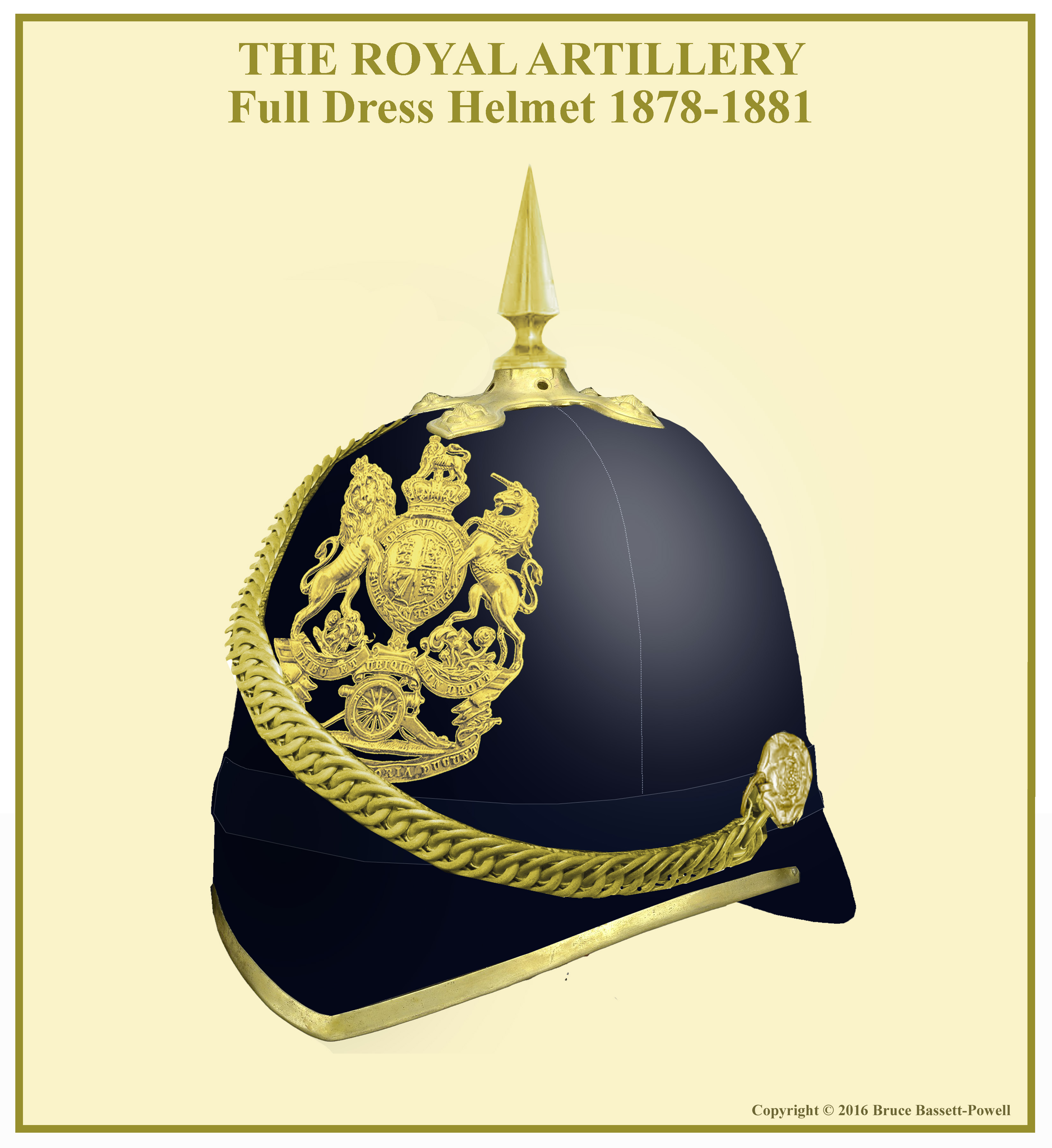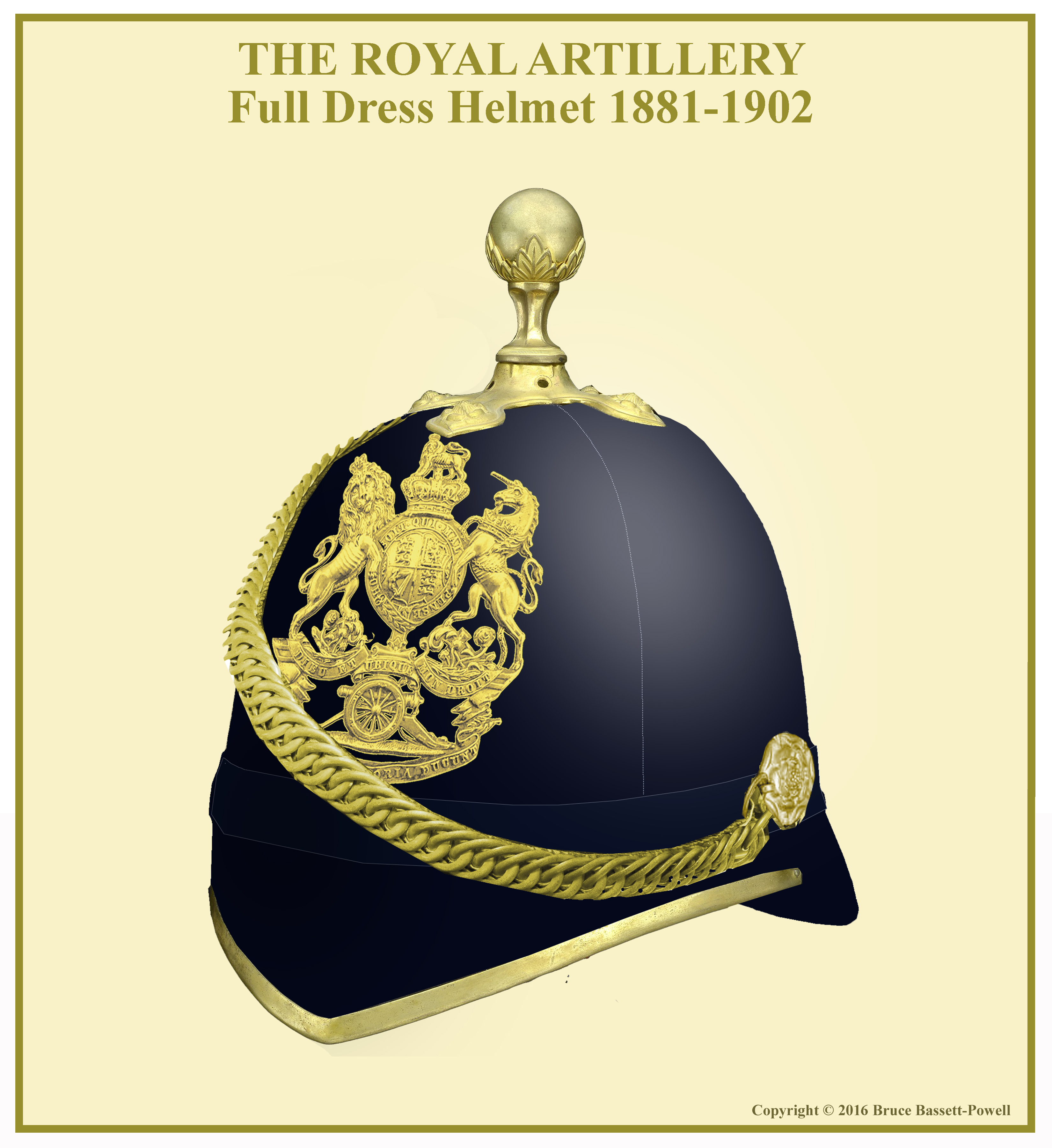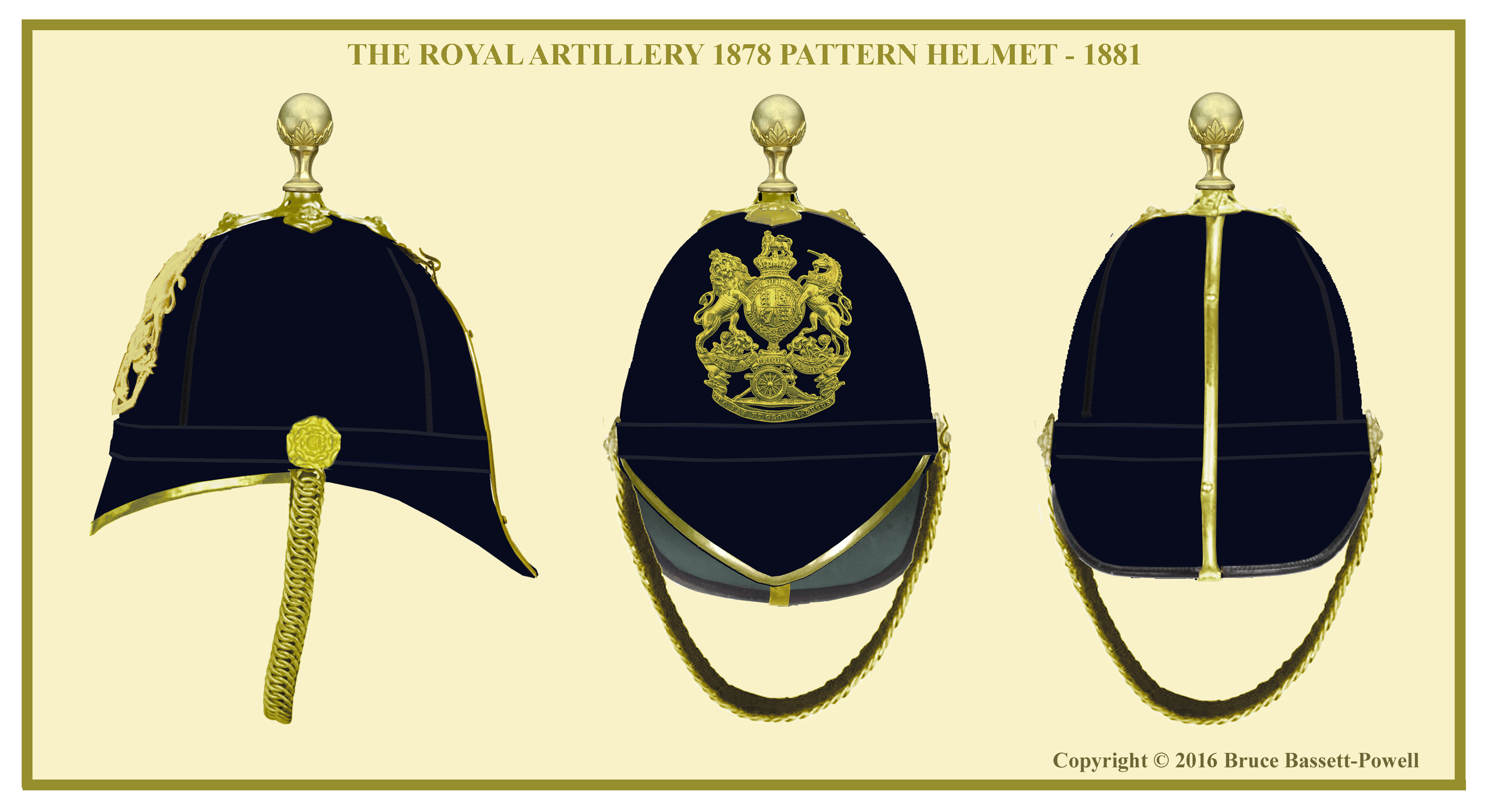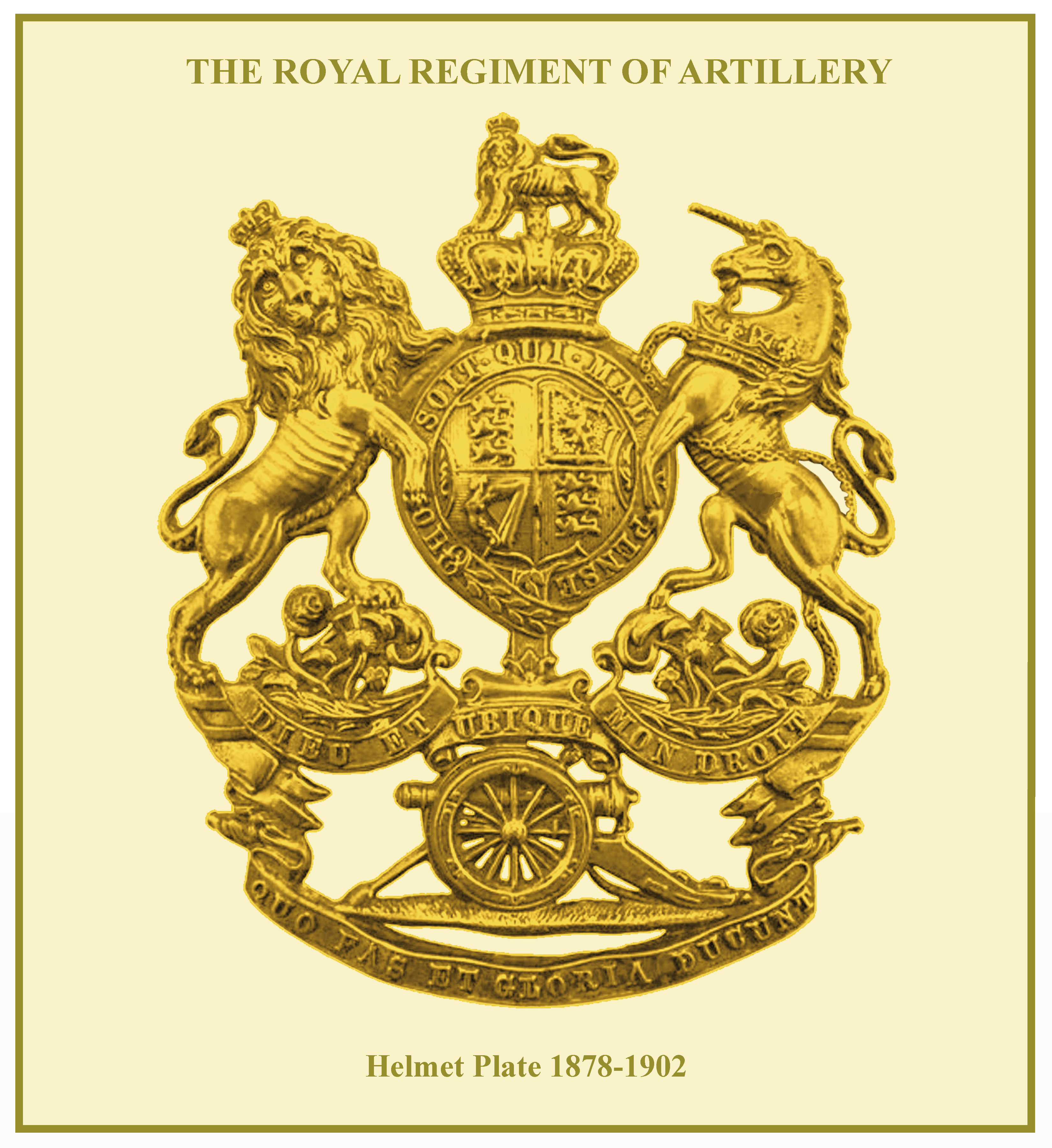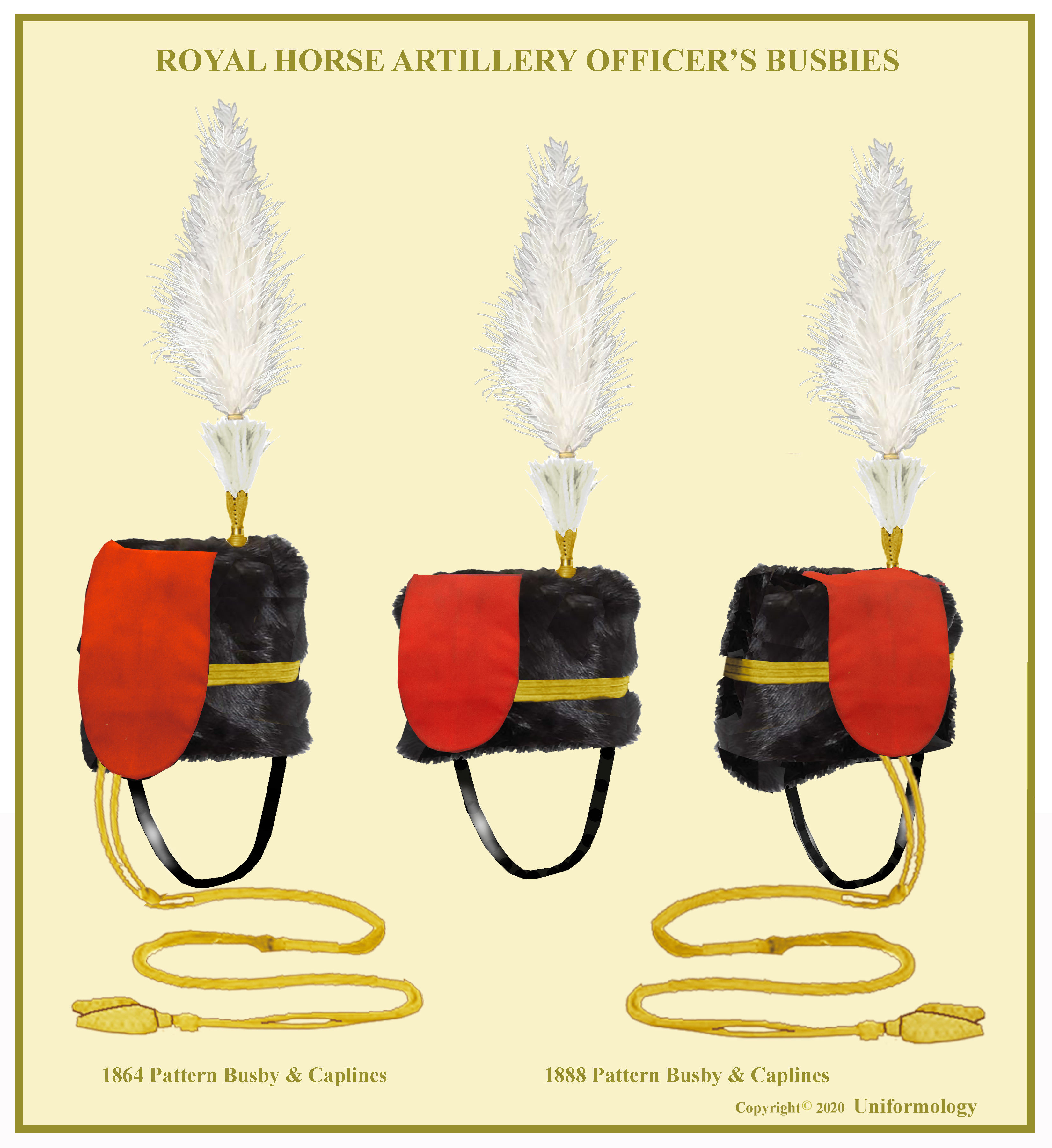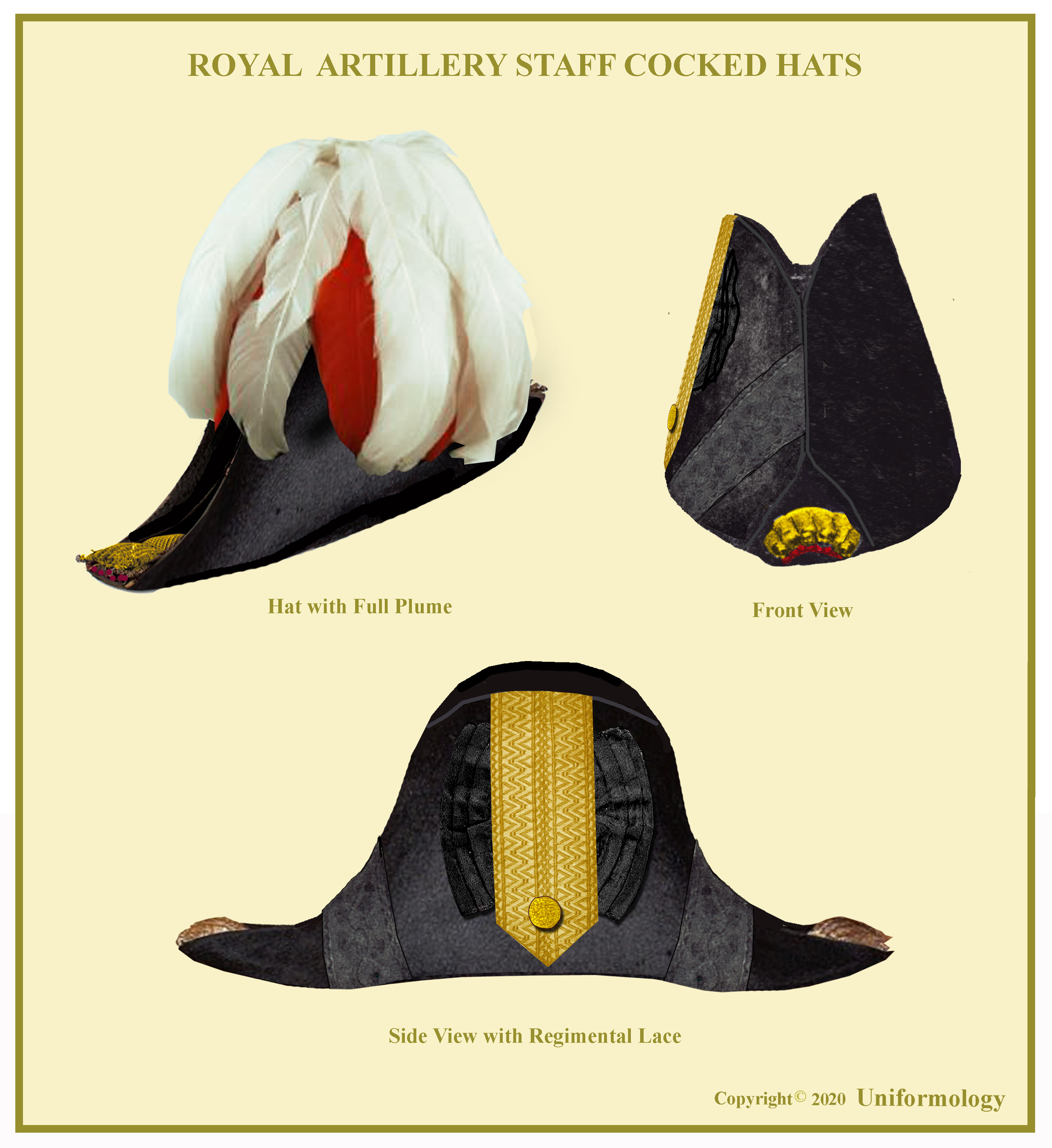UNIFORMS, ARMS & EQUIPMENT - ROYAL ARTILLERY
THE ROYAL REGIMENT OF ARTILLERY 1881-1902
HEADDRESS
OFFICER'S FULL DRESS HELMET
For the most part, the foot artillery wore the same headdress as the infantry from the beginning of its existence. In 1856 they adopted the busby, which had been authorised the previous year. This headdress was similar to that of the RHA but with significant differences. There were no caplines and the goatshair plume was placed on the left side stemming from a brass grenade socket. The top of the plume reached the top of the busby. The red bag was on the right side.
In 1878, the individuality ended as they were ordered to wear the infantry pattern helmet, modelled somewhat on the Prussian model. (The victory over France by the Germans in 1870 had spawned imitation of this helmet by many countries).
The Officers’ helmet was made of cork covered in dark blue cloth in four seams. The peak, front and back stiffened and covered with unseamed blue cloth. The front peak was bound with gilding metal 3/16th ins wide and the back peak with patent leather. The distance from both peaks to the centre of the crown was 10 ½ Ins and 8 ins from side to top. There was a gilt convex bar down the rear of the helmet. The gilt curb chain was attached to two gilt rosettes on the side. A gilt cross piece at the top of the helmet had a gilt 2 ¾ spike screwed into the top.
By 1881, it was decided that a ball finial should replace the spike (ostensibly to protect horses from injury). Again a feature of the German artillery. Because of campaign activity, many officers did not replace the spike until the end of 1882.
Despite the fact that many observers declared the helmet “Ugly” it has in fact endured for over 100 years as a full dress helmet, being worn by many regimental bands to this day.
THE HELMET PLATE
The first time the Royal Arms were shown on a helmet plate was on the Albert shako of 1846 in which it was placed above the gun on a rayed star plate. A smaller version was worn on the ball of the plume socket grenade on the 1856 busby. The one shown in the above plate was authorised in 1878 and, with differences in crown, has been worn until the end of the helmet’s use. The Gun, as worn universally to this day, firs appeared on the rayed star plate of the 1832-1839 shako.
THE RHA OFFICER'S BUSBY
The Royal Horse Artillery adopted the busby in 1837, a full five years before most of the Hussar regiments had their busbies restored. It was somewhat larger in the earlier years but in 1855 its description was “Black Sable Fur 8 inches high with scarlet bag and white plume of egret feathers 9 Inches high. From then on, the RHA followed the hussar busby dimensions quite closely including the reduction in height of 1888. The main differences were that there was no busby bag lace and no button, the cap lines went three times around the waist and it had a black patent leather chin strap instead of chin scales. In 1899 the plume became white ostrich feathers.
THE COCKED HAT
The Royal Artillery being a large corps (The largest in the British Army), it required a full complement of staff officers and personnel to manage it. After the Board of Ordnance was abolished, their role became extensive. The RA staff wore cocked hats which compared with the staff of the Army. The main difference being the RA pattern lace on the loop.
NEXT
FULL DRESS TUNICS, JACKETS
& NETHER WEAR

